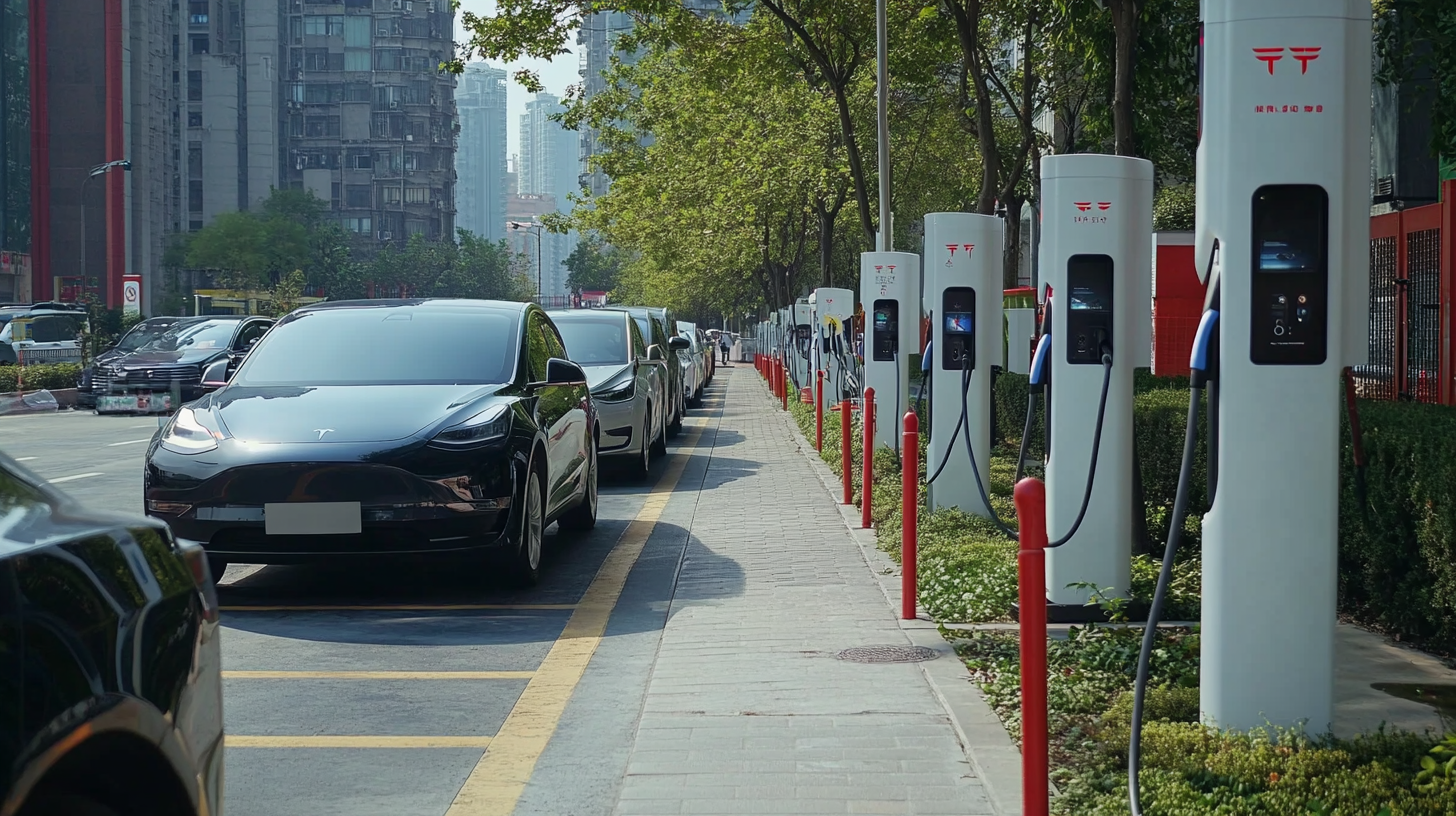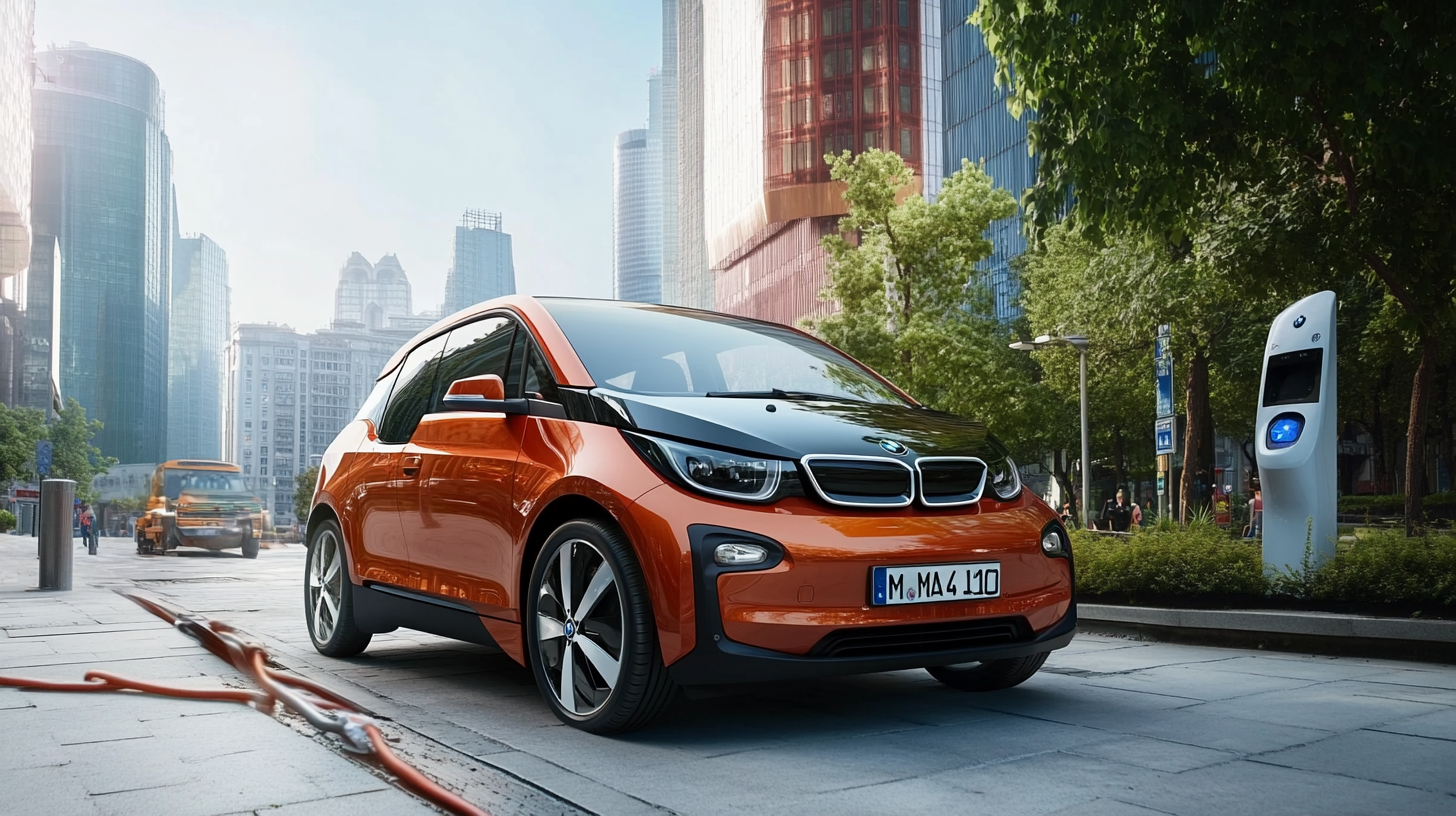Leave Your Message
As the world increasingly prioritizes sustainability and environmental responsibility, the automotive industry stands at the forefront of this transformation, with Electric Vehicles (EVs) leading the charge. China, the largest automotive market globally, is not only a significant consumer of EVs but also a powerful producer, reshaping the dynamics of global manufacturing. The rapid advancements in battery technology, aggressive government policies, and substantial investments from both domestic and international companies have positioned China as a key player in the EV landscape. This shift is not only transforming the local economy but also impacting supply chains, labor markets, and technological innovation worldwide. As countries race to adopt cleaner transportation options, understanding China's role in this evolution sheds light on the future of manufacturing and the global economy. The rise of Electric Vehicles signifies more than just a change in how we drive; it's a paradigm shift that holds implications for industries and consumers alike.

China's Dominance in the Global Electric Vehicle Market is not only a remarkable achievement but also a critical factor reshaping the landscape of the automotive industry. As of 2023, Chinese electric vehicle (EV) sales accounted for over 50% of the global market, with the country leading in both production and consumption. According to the International Energy Agency (IEA), China produced more than 3 million electric vehicles in 2022 alone, a significant increase from previous years, highlighting its commitment to sustainable transportation.
One of the key contributors to China's dominance is the robust support from the government in the form of subsidies and incentives for both manufacturers and consumers. This strategic backing has propelled key players like BYD and NIO to the forefront of the global EV race. In fact, the growth in China's electric vehicle market has also triggered a ripple effect on global manufacturing dynamics, compelling traditional automakers to accelerate their electrification strategies.
**Tip: For consumers eyeing electric vehicles, it's essential to consider local charging infrastructure and availability. China boasts one of the world’s most extensive charging networks, making ownership much more convenient.**
**Tip: If you're an investor or stakeholder in the automotive sector, keep an eye on emerging technologies such as battery innovation and AI in manufacturing. These will likely dictate competitive advantages in a rapidly evolving market.**
| Rank | Company | Country | Market Share (%) | 2023 Sales (Units) |
|---|---|---|---|---|
| 1 | BYD | China | 25% | 1,200,000 |
| 2 | Tesla | USA | 20% | 1,000,000 |
| 3 | SAIC Motor | China | 15% | 800,000 |
| 4 | NIO | China | 10% | 500,000 |
| 5 | Volkswagen | Germany | 8% | 400,000 |
China's electric vehicle (EV) manufacturing sector is set to redefine global standards through innovative technologies and strategic investments. As of 2023, the country has emerged as a leader in EV production, accounting for over 60% of the world's total electric vehicle sales, according to the International Energy Agency. This surge is largely driven by advancements in battery technology, with companies like BYD and CATL investing heavily in lithium iron phosphate (LFP) batteries, which not only reduce costs but also enhance safety and efficiency. Furthermore, these innovations have led to significant reductions in battery production costs, estimated to drop by about 40% over the next five years, creating a ripple effect across the global manufacturing landscape.
In addition to battery innovations, China is pioneering new manufacturing processes, such as the adoption of digital twin technology in vehicle design and production. This approach allows manufacturers to simulate the entire production line, enabling enhancements in efficiency and precision that were previously unattainable. As a result, China is not only streamlining its own manufacturing capabilities but also setting a new benchmark for manufacturers worldwide. With the global market for electric vehicles expected to reach $7 trillion by 2030, China's continued investment in innovative manufacturing practices is positioning it at the forefront of this crucial industry transition.

The rapid growth of electric vehicle (EV) production in China can be largely attributed to strategic government policies designed to foster innovation and investment in the sector. According to a report by the International Energy Agency, China's electric vehicle sales surged, reaching over 1.3 million units in 2021 alone, largely influenced by subsidies and incentives provided by the Chinese government. These policies have not only spurred local manufacturers like BYD and NIO to expand their production capabilities but also attracted substantial foreign investment, reshaping the global automotive landscape.
Furthermore, the Chinese government has implemented stringent regulations on traditional internal combustion engine vehicles, pushing manufacturers to pivot towards electric alternatives. By 2025, China aims to have EVs account for 20% of all vehicle sales, a goal that is supported by robust infrastructure development and battery technology advancements. This proactive approach has established China as a leader in EV technology, with significant increases in battery production, essential for meeting global demand.
Tip: For businesses looking to thrive in the EV market, staying informed about government policies and incentives is crucial. Regularly check for updates or changes to subsidies that could impact pricing strategies. Additionally, collaborating with local manufacturers could provide insights into navigating the regulatory landscape effectively.
China's rapid advancement in electric vehicles (EVs) is reshaping the global manufacturing landscape, bringing both challenges and opportunities for international manufacturers. According to the International Energy Agency (IEA), China accounted for over 50% of global EV sales in 2021, and this figure is expected to rise as domestic demand surges and exports increase. Manufacturers must navigate a highly competitive environment influenced by government policies and a robust local supply chain, which could pose significant entry barriers for foreign firms.
As global manufacturers consider expanding or enhancing their footprint in China, it is crucial to understand the local market dynamics. For instance, collaboration with local firms can facilitate market entry and provide essential insights into consumer preferences. Companies should also invest in research and development to innovate and adapt their products to meet the rising standards of China's market.
**Tip:** Engage in partnership with Chinese tech firms to leverage their expertise in battery technology and charging infrastructure.
**Tip:** Stay informed about China's regulatory landscape and policies on EVs to ensure compliance and capitalize on state incentives.

China's electric vehicle (EV) industry is not only reshaping the automotive landscape but also leading the way in sustainable manufacturing practices. According to the China Association of Automobile Manufacturers, production of new energy vehicles, including EVs, surged by over 200% from 2020 to 2021, highlighting a robust commitment to eco-friendly alternatives. This rapid growth has prompted manufacturers to adopt more sustainable materials and processes, significantly reducing carbon footprints. Reports indicate that by 2025, approximately 20% of all vehicles sold in China are expected to be electric, further embedding sustainability into the sector.
**Tips for Sustainable Manufacturing in EV Production:**
1. **Invest in Renewable Energy:** Transitioning to solar or wind energy for manufacturing plants can drastically lower emissions. Companies like BYD have already made strides by integrating solar panels in their facilities.
2. **Emphasize Battery Recycling:** Developing efficient recycling programs for lithium-ion batteries not only conserves resources but also reduces environmental impact. A recent study by the International Energy Agency suggests that effective recycling could recover up to 60% of valuable materials used in batteries.
Through innovation and a commitment to sustainable practices, China continues to set benchmarks that influence global manufacturing dynamics, making it a pivotal player in the future of transportation.
This chart illustrates the significant growth in electric vehicle production in China from 2020 to 2023, showcasing the country's leading role in transforming the automotive manufacturing dynamics globally.
